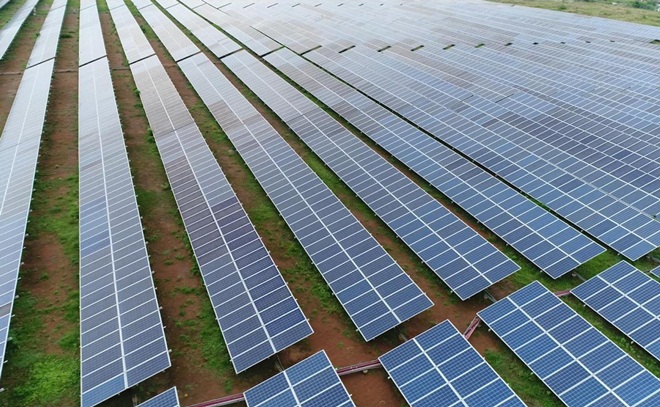New Delhi: Five states led by Karnataka account for 65% of the total installed capacity of solar power with experts attributing the stellar growth to locational edge, proactive approach of local governments and ease of doing business (EoDB).
The five states together have 25,153 MW of installed solar capacity out of the gross national capacity of 39083.67 MW at the end of February, 2021.
As per latest official data, Karnataka tops the chart with the southern state having 7346.84 MW grid connected solar power capacity. It is followed by Rajasthan with 5,472 MW installed solar power capacity.
The third spot is held by Tamil Nadu with 4403 MW capacity. It is followed by Andhra Pradesh and Telangana with 3996 MW and 3936 MW grid connected solar power, respectively.
Industry experts claimed the combined share of five states to be more than 70% saying government data comes with a little time lag.
Some of the bigger states like Uttar Pradesh, Bihar and West Bengal remain laggards with no significant achievement to flaunt.
“The states which have seen higher installation of solar power give best generation. As project costs remain the same, whether you put up capacity in Chhattisgarh or Rajasthan, you will prefer a location which will give you better generation. So, if Rajasthan gives you 15% higher generation obviously you will go to Rajasthan. Only then prevailing low tariff in the sector would be viable,” Sunil Jain, a renewable energy veteran and former Executive Director and CEO of Hero Future Energies told Top Lead India.
“States governments’ policy also plays an important role. Some states like Karnataka, Rajasthan and Gujarat have been proactive in facilitating additional capacity,” he added.
With its focus continuing on green energy, the central government has taken a slew of measures to add more capacity in the renewable sector such as solar and wind. Among the measures to boost solar power in the country, the government allowed 100% FDI in the sector and decided to set up Ultra Mega Renewable Energy Parks to provide land and transmission to renewable energy developers on a plug and play basis.
The government has facilitated laying of new transmission lines and creating new sub-station capacity under the Green Energy Corridor Scheme for evacuation of renewable power.
“The installed capacity of solar power has reached 39083.67 MW at the end of February, 2021, which is about 15 times of the capacity of 2632 MW at the end of 2013-14,” Minister of State (Independent Charge) for New and Renewable Energy, Power and MoS for Skill Development and Entrepreneurship RK Singh said in reply to a question in Lok Sabha last week.

